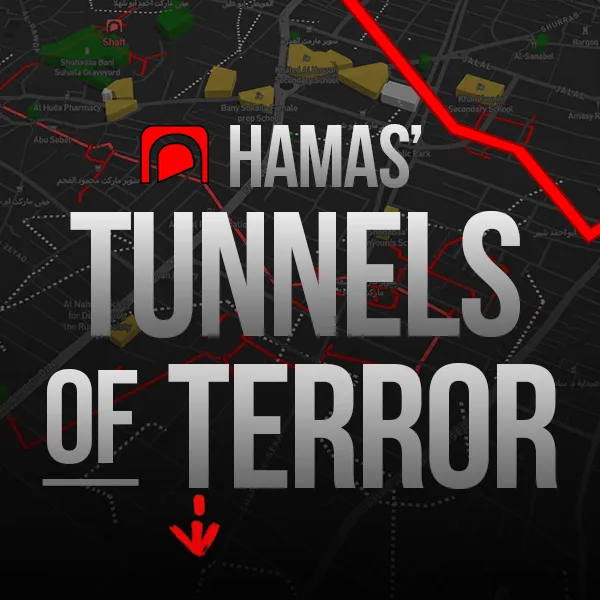Key Takeaways:
-
International media consistently depicts Israel as violating the ceasefire, while ignoring Hezbollah’s ongoing efforts to rebuild its military power and Israel’s legitimate defensive strikes to stop it.
-
Experts note that Hezbollah is actively re-arming under Lebanese government inaction, forcing the IDF — with U.S. backing — to preemptively target weapons sites, a reality largely omitted from global coverage.
-
Although Hezbollah publicly claims to respect the truce, it immediately resumed rehabilitation after the ceasefire, yet media narratives focus almost exclusively on Israeli actions, obscuring Hezbollah’s violations and long-term threat.
A year into a fragile ceasefire between Israel and Hezbollah, the IDF yesterday (November 24) killed a top commander of the terror group in a targeted strike in a Beirut suburb.
Hezbollah — and much of the media — immediately framed the strike as an Israeli violation of the truce, even though, for months, Israel has been acting to prevent the organization’s attempts to rebuild its military infrastructure while it openly refuses to disarm.
To better understand the dynamics between Lebanon, Hezbollah, and Israel, HonestReporting spoke with Lieutenant Colonel (Res.) Sarit Zehavi, founder and president of Alma, a nonprofit and independent research center specializing in Israel’s northern border security.
“Mowing the Grass”
Almost every major outlet reporting on the assassination of Hezbollah commander Ali Tabtabai included background suggesting Israel was the aggressor. Reuters, for example, wrote:
The November 2024 ceasefire was meant to end a year of fighting between Hezbollah and the Israeli military, triggered by Hezbollah’s rocket fire on Israeli posts a day after the October 7, 2023 attack by its Palestinian ally Hamas.
But Israel has kept up near-daily strikes on Lebanon since the truce, targeting what it says are Hezbollah arms depots, fighters and efforts by the group to rebuild. It has ratcheted up those strikes in recent weeks.
Israel accuses Hezbollah of trying to regroup in the south, and is pressuring Lebanon to be more aggressive in confiscating all unauthorised arms across the country, including Hezbollah’s.Hezbollah has not fired on Israel since the ceasefire started and says it is abiding by it.
But no outlet examined the real reasons behind the situation, or what Hezbollah has been doing on the ground. Zehavi highlighted three key points essential to understanding the situation:
-
The IDF is operating with U.S. backing to prevent Hezbollah from re-arming.
-
Strategically, Israel still holds the advantage after the heavy blows Hezbollah absorbed during the recent conflict.
-
Without a long-term policy shift, Hezbollah will simply rebuild — again.
Hezbollah continues to build up its forces south of the Litani River in clear violation of the understanding between Lebanon and Israel established almost a year ago. These four buildings used by Hezbollah are just a few out of dozens of others in the village of Beit Lif where… pic.twitter.com/3qKJ4woIER
— Israel-Alma (@Israel_Alma_org) November 20, 2025
“On the one hand, Hezbollah is making a lot of effort in rehabilitating its military strength, and on the other hand, the IDF is attacking any kind of such attempt. Who is winning in this kind of competition? I don’t know, but it is clear that we are ‘mowing the grass,'” Zehavi told HonestReporting, using a well-known metaphor for periodic military operations in the Israeli-Palestinian conflict.
“If there is a need to expand the range of attacks, the IDF will do that,” she added, only hours before the strike that killed Tabtabai.
According to Zehavi, part of the challenge is the low expectations of the Lebanese army and government, who are not doing enough to disarm Hezbollah, out of cowardice or collaboration.
“It’s a big area, it’s bigger than Gaza, to disarm it [Hezbollah] takes a long time. And if you just pretend to disarm it and you don’t disarm it, it takes even longer. So what you see is the IDF telling residents to get out of specific places in order to bomb these specific buildings because there are Hezbollah weapons in those buildings.”
A Change of Policy
Over the past year of fighting — beginning on October 8, 2023 — Israel eliminated much of Hezbollah’s senior leadership, including its former leader Hassan Nasrallah. A covert operation in September 2024 involving the detonation of thousands of pagers neutralized numerous operatives.
But Zehavi says these achievements, while significant, have not solved the underlying problem.
“It’s obvious the IDF didn’t finish the job. It had a fantastic military achievement, but Hezbollah still exists. We demolished 80 percent of their rocket arsenal, but they still have thousands of rockets… And a day after the ceasefire, Hezbollah went back to rehabilitation. This is ongoing.”
Asked whether the balance of power has shifted, Zehavi said that Hezbollah is currently refraining from retaliation, but that this restraint might not last.
“Israel cannot follow the same policy it followed after the war in 2006, when we respected the ceasefire despite Hezbollah rearming. Hezbollah never respected the ceasefire…. We just stood on the border and watched Hezbollah becoming a monster. We cannot let it happen again,” she said, referring to the situation following the 2006 conflict between Hezbollah and Israel.
As a resident of northern Israel, Zehavi says she feels somewhat safer today, yet warns the situation is far from stable.
“The difference now is that the IDF has a green light to attack if there are violations by Hezbollah, and it holds five hill posts in south Lebanon, instead of having Hezbollah positions there,” she said. “Hezbollah is not the same as it used to be on October 6, 2023. It is much weaker. Yet, we don’t feel that the situation is stable here… It’s not peace we experience here.”
Liked this article? Follow HonestReporting on Twitter, Facebook, Instagram and TikTok to see even more posts and videos debunking news bias and smears, as well as other content explaining what’s really going on in Israel and the region. Get updates direct to your phone. Join our WhatsApp and Telegram channels!


